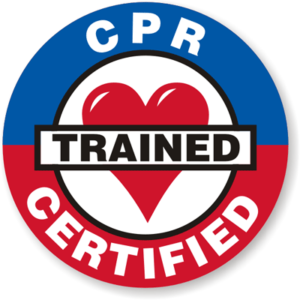
Understanding Weather
Surf Education > Understanding Weather >
Weather Definition – Weather is the day-to-day conditions of a particular place.
The weather is all around us, all the time. It is an important part of our lives and one that we cannot control. Instead the weather often controls how and where we live, what we do, what we wear and what we eat. Someone who studies the weather is called a meteorologist. Weather predictions are made by forecasters. Weather is made up of different things. Click on the different types of weather above to find out more about them and how they can be measured.
What is Climate? Climate is often spoken about at the same time as weather, but it is something quite different. The climate is the common, average weather conditions at a particular place over a long period of time (for example, more than 30 years). We learn about different climates around the world. Deserts have a hot and dry climate while the Antarctic has a very cold and dry climate.
How Hurricanes Form – “Hurricane” is the term used to describe the strongest of the windy, circulating storms –- or cyclones – in the Atlantic and eastern Pacific oceans; in the western Pacific these kinds of storms are referred to as typhoons. Most Atlantic hurricanes are born in the southern Atlantic Ocean , off the coast of Africa , in the months of June through November each year. During this time, winds off the west coast of Africa sometimes converge, circulating counterclockwise. Often, these winds maintain a low speed and travel across the Atlantic Ocean as tropical waves, causing little more than rainfall on land masses they strike.At other times, when water temperatures are warm enough and atmospheric conditions are correct, the wind speeds increase and begin to form around a center, or eye. Hot, moist air from the ocean is pulled up into the eye of the storm, which is now called a tropical storm. As the air rises and cools, moisture condenses and is released as heavy rain into the torrential winds circling the eye. The released energy is pumped into the rotating cloud mass, making it rise and spin even faster. By the time the winds reach speeds of 119 kmph (74 mph), the storm has become a hurricane.As the spinning storm moves across the ocean, unstopped by land, wind speeds increase. Hurricanes are commonly classified by the strength of their winds into five categories on the Saffir-Simpson Hurricane Intensity Scale. The weakest hurricanes, with wind speeds of 119-153 kmph (74-95 mph), are referred to as Category I storms and cause minimal damage primarily to plants and trees. In 1992, Hurricane Andrew was a Category IV storm with sustained wind speeds of 225 kmph (140 mph). Category V storms, such as Hurricane Camille in 1969, are the strongest and responsible for catastrophic damage. Hurricane Camille, with sustained winds of more than 320 kmph (200 mph), was the most powerful hurricane ever recorded to hit the northern gulf coast .Although difference in wind speed is one easy way to classify storms, hurricanes have other unusual characteristics. Some storms move quickly and produce little rainfall, while others are slow and generate torrential rain squalls with downfalls that often exceed 38 cm (15 inches). One characteristic that all storms share, however, is the location of the most powerful and dangerous winds. The forward right quadrant of a hurricane—12:00 to 3:00 on a clock face—is its strongest and most dangerous section, because it is fueled by the counterclockwise motion of the storm as well as its forward movement.As the storm moves along the ocean surface, it becomes a complex, tight mass of wind and rain. The eye becomes perfectly clear on satellite pictures; larger hurricanes can have an eye as large as 56.3 km (35 mi) across. The hurricane’s eye is the area around which the winds rotate and is actually a calm area in the center of the storm. People have often been deceived into thinking that a storm had ended when the eye passed over and were surprised when destructive winds began again. Hurricanes can contain and release enough energy to supply electricity to the United States for a year. And hurricanes carry the ocean along with them, bringing storm surges as high as 7.6 m (25 ft) above sea level. Often the accompanying storm surge and associated floods are responsible for much damage in coastal areas.
Low Pressure systems – Often, you hear weather forecasters refer to a storm or low-pressure area moving toward your region. As air rises, it cools and often condenses into clouds and precipitation. Usually, when forecasters say a low-pressure area is moving toward your region, cloudy weather and precipitation often result as the low-pressure area approaches. A steady rain or snow can fall to the north of the warm front as warm moist air from the south rises up and over the cold air ahead of the warm front. Showers and thunderstorms often fire up ahead of the cold front in the warm, unstable air. Usually, showers and thunderstorms ahead of the cold front are much shorter in duration than the precipitation ahead of the warm front. Due to the counterclockwise circulation around low-pressure areas in the northern hemisphere, cold air will likely be found to the north and west of low-pressure areas while warm air is most often found to the south and east of low-pressure areas.
Storms pursue unpredictable paths toward land. There is no set pattern in the journey from their birth places off Africa , although they frequently move northwesterly to the Gulf of Mexico and eastern coasts of North and Central America .


